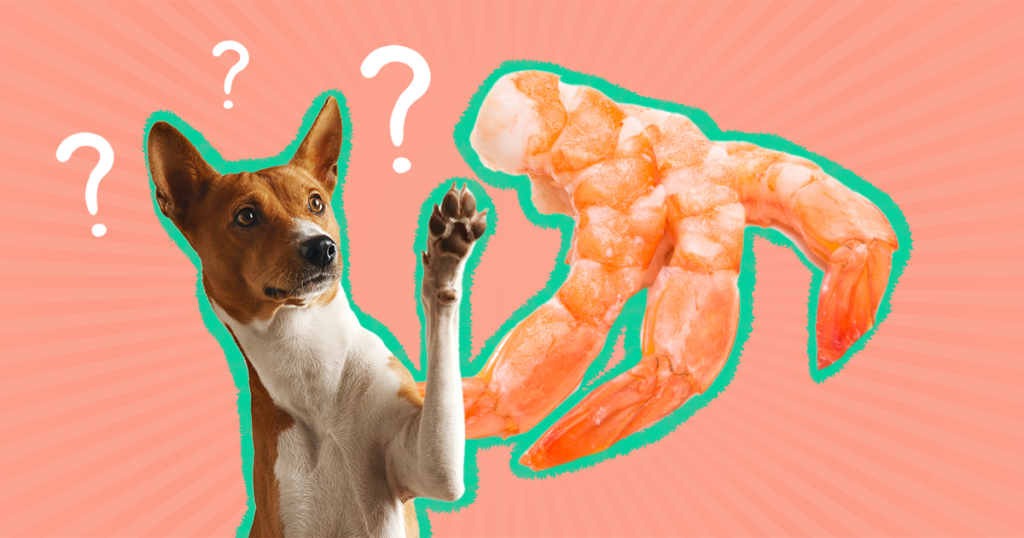As dog owners, we all want to share tasty treats with our furry friends. Sometimes, when we’re enjoying a nice meal, those puppy eyes make it hard to say no. But when it comes to seafood like shrimp, many dog owners ask, “Can dogs eat shrimp?” The short answer is yes, dogs can eat shrimp—but there are a few important things to know before feeding it to your pet.
Is Shrimp Safe for Dogs?
Yes, shrimp can be safe for dogs when it’s properly cooked and served in moderation. Shrimp is low in fat and calories and high in protein, making it a healthy treat for dogs. It’s also packed with nutrients like:
- Vitamin B12 (supports brain health and energy)
- Niacin (helps with digestion and skin health)
- Phosphorus (important for bones and teeth)
- Antioxidants (protect cells from damage)
However, there are some risks if you’re not careful with how you prepare and serve shrimp.
What Kind of Shrimp Can Dogs Eat?
Dogs should only eat plain, fully cooked shrimp. Avoid giving your dog raw or undercooked shrimp because it may contain harmful bacteria that could make your dog sick. Also, remove the shell, tail, and head, as these parts can be hard to chew and might cause choking.
Good Ways to Serve Shrimp to Dogs:
- Boiled
- Steamed
- Grilled (without seasoning or oil)
Avoid These Shrimp Preparations:
- Fried shrimp (too much oil and fat)
- Shrimp with garlic, onions, butter, or seasoning (can be toxic to dogs)
How Much Shrimp Can Dogs Eat?
Shrimp should be an occasional treat, not a regular part of your dog’s diet. A good rule of thumb is to give:
- Small dogs: Half a shrimp
- Medium dogs: One shrimp
- Large dogs: Up to two shrimp
Too much shrimp can upset your dog’s stomach and lead to digestive issues like vomiting or diarrhea.
Can Shrimp Be Bad for Dogs?
Yes, shrimp can cause problems if given in the wrong way. Here are some possible risks:
1. Choking Hazard:
The shell, tail, and legs are tough and sharp. Always remove them before giving shrimp to your dog.
2. Allergic Reaction:
Like humans, some dogs may be allergic to shellfish. Watch for signs like itching, swelling, or difficulty breathing. If you notice any of these, contact your vet immediately.
3. High Cholesterol:
Shrimp is high in cholesterol. While it’s okay in small amounts, too much can lead to health problems over time, especially in older dogs or dogs with heart conditions.
4. Contamination:
Raw or improperly cooked shrimp can carry harmful bacteria like Salmonella or Listeria. Always make sure the shrimp is thoroughly cooked.
How to Introduce Shrimp to Your Dog
If your dog has never had shrimp before, start slow. Give a small piece and watch how your dog reacts. If they enjoy it and don’t show any signs of stomach upset, it’s okay to give a little more next time.
Health Benefits of Shrimp for Dogs
In small amounts, shrimp can be a healthy snack. It’s rich in:
- Lean protein: Supports muscles and energy
- Antioxidants: Help protect your dog’s cells
- Omega-3 fatty acids: Support heart and brain health
- Glucosamine: May help with joint health (in the shell, but best to get from supplements)
Can Puppies Eat Shrimp?
Puppies can eat shrimp, but you should be extra cautious. Their stomachs are more sensitive, so give a tiny amount and watch closely for any reactions. Always consult your vet before introducing new foods to a puppy’s diet.
Other Seafood Dogs Can Eat
If your dog enjoys shrimp, they might like other seafood too! Dogs can safely eat:
- Salmon (fully cooked, no bones)
- Tuna (in small amounts)
- Whitefish
- Cod
Just like with shrimp, make sure all seafood is cooked and plain—no spices or sauces.
Final Thoughts
Shrimp can be a tasty and healthy treat for your dog when prepared the right way. Always serve it plain, cooked, and in small amounts. Avoid giving raw shrimp or anything with seasoning. As with all treats, moderation is key.
If you’re ever unsure about feeding shrimp or any other new food to your dog, it’s best to check with your veterinarian. Your dog’s health and happiness come first!
So next time you’re enjoying shrimp, feel free to share a small bite with your pup—just keep it simple and safe!

Andy Parker is a dog lover, writer, and senior editor at BarkPicks. With years of experience covering canine health, training, and gear, he helps pet parents make smarter choices for happier, healthier dogs. Andy shares his home (and heart) with two rescue pups, Charlie and Mia.



